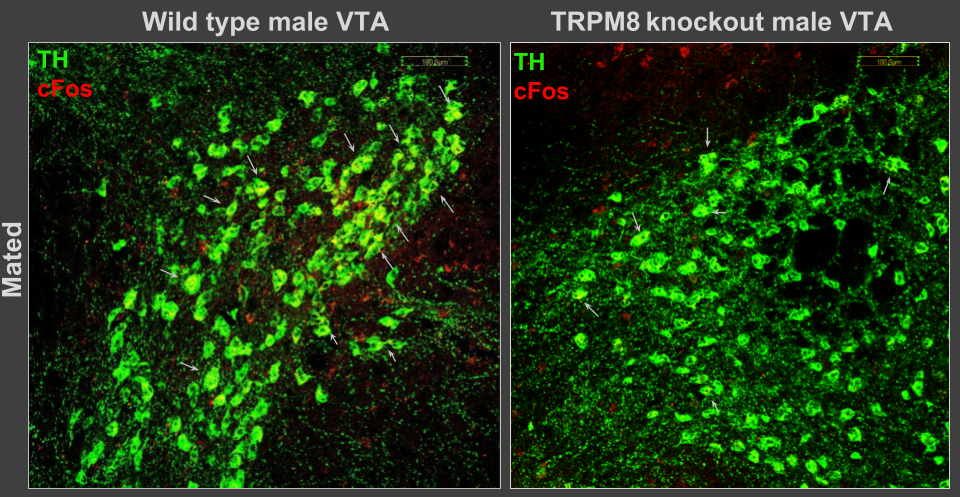When it comes to sex and aggression in mice, a cold-sensor tells the brain when “enough is enough!”
Researchers at the University of Illinois College of Medicine find that TRPM8, long ago identified as a cold-temperature sensor, regulates aggressive and hypersexual behavior in response to testosterone
BALTIMORE, MD – Testosterone is blamed for sex drive and aggression, but it also appears to be critical for telling the brain “enough!” when it comes to those behaviors. A molecule called TRPM8 (pronounced trip-M-8) embedded in the surface of some cells seems to be responsible for sending these cues in response to testosterone. Without these cues, male mice become dangerously aggressive and have an insatiable appetite for sex. This research, by Eleonora Zakharian and colleagues at the University of Illinois College of Medicine, will be presented at the 63rd Biophysical Society Annual Meeting, to be held March 2 - 6, 2019 in Baltimore, Maryland.
TRPM8 was long ago identified as a cold-temperature sensor, but a few years ago Zakharian wondered what it was doing in high levels in the prostate, which never experiences enough cold to activate it. She then published that TRPM8 is actually a rapid testosterone signaling receptor, so her lab’s next step was to find out what happens to mice in its absence. They tested mice without the TRPM8 gene, and observed that the males were violent and hypersexual—showing increased mountings and engaging sexually long after a normal mouse would.
“The mice without TRPM8 are so aggressive, we found that we cannot keep them in the same cage, unlike normal mice, which live together,” Zakharian explained.
The females without TRPM8 also showed some increase in sexual appetite—they seemed receptive to the advances from the males, though Zakharian said it was difficult to measure because of the hyperactive behavior of the males. These females also displayed increased sniffing behaviors, which is typical when they are sexually active.
The aggressive and hypersexual behavior is actually opposite of what happens when the genes for classic steroid receptors, like the androgen receptor that binds testosterone, are removed from mice. Those mice become less aggressive and less sexually active. Zakharian identified that TRPM8 is part of the testosterone-driven mechanism that communicates the sex rewards in the brain—the TRPM8 knockout mice don’t feel rewarded by mating, so they keep doing it.
The team realized that the hyper-sexuality of male mice without TRPM8 is somewhat reminiscent to that of humans with Klüver–Bucy syndrome. Some cases of Klüver–Bucy syndrome are caused by damage to the amygdala, the part of the brain that’s responsible for sexual and aggressive behavior, among other things. So Zakharian and her team looked for changes in the neurons of the mouse amygdala.
“By adding testosterone directly to the amygdala we were able to activate the neurons of male mice with TRPM8, but not those without TRPM8,” Zakharian said.
They also looked at the activation of specific neurons that communicate reward in the ventral tegmental area of the brain, the part responsible for sexual reward. After mating, activation of neurons in this part of the brain was impaired in males without TRPM8.
“Without TRPM8 the male mice aren’t experiencing normal responses to testosterone in their brain, and as a result their aggressive and sexual behaviors are significantly increased,” Zakharian explained.
TRPM8 may be critical for signaling testosterone-induced behavior by activating reward centers of the brain.
##########

Caption: In the ventral tegmental area (VTA) of the brain, fewer neurons are activated after mating in male mice without TRMP8 (right) compared to normal mice (left), as indicated by arrows where the neuronal activation marker (red) overlaps with the dopaminergic neuron marker (green). Image courtesy of Eleonora Zakharian.